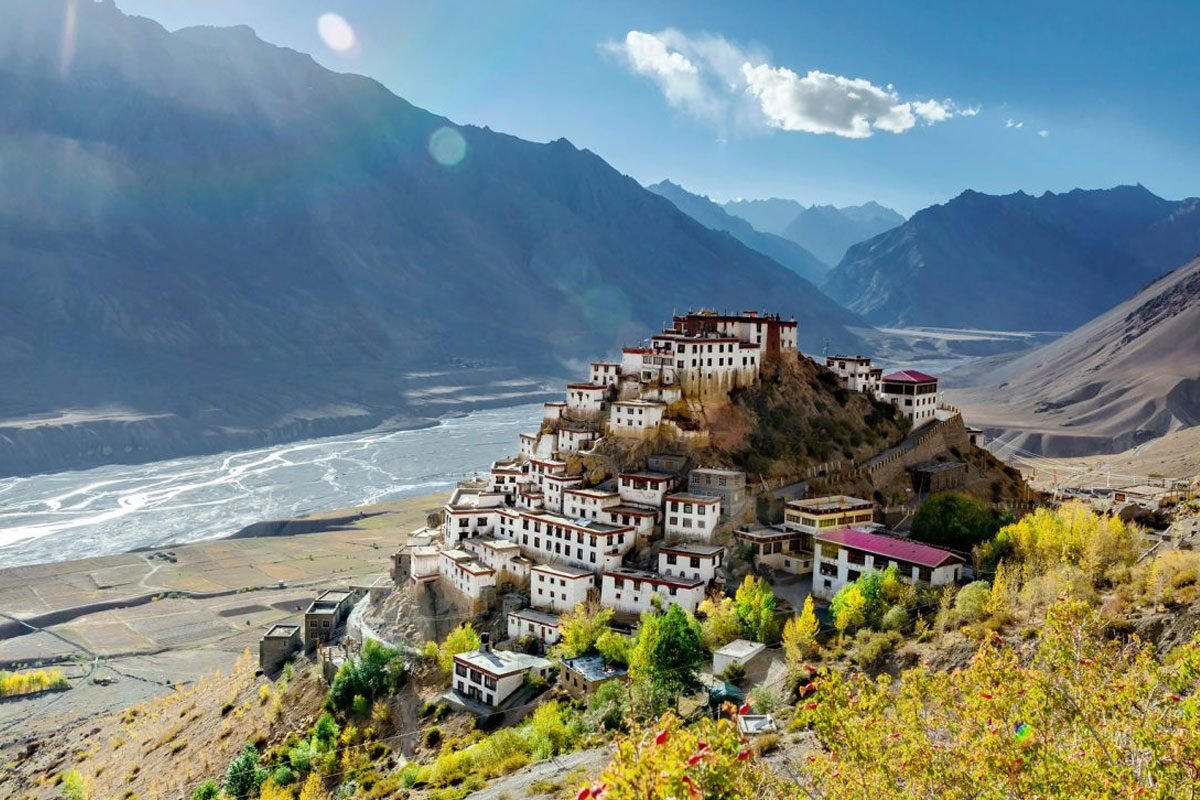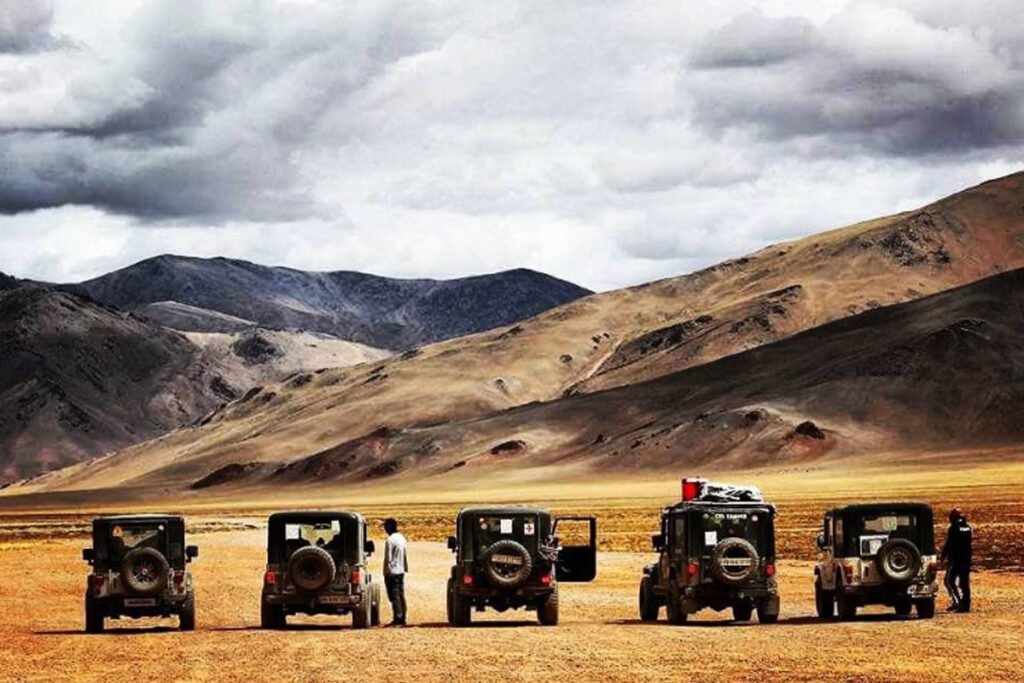
Winter Expedition for Spiti Valley, a rugged paradise, lies in the majestic Himalayas where glistening lakes, ancient monasteries and snow-capped peaks form a truly iconic landscape. Winter Expedition for Spiti Valley 2025 is not just the place to be but an experience that truly resonates with your spirit. The number of things to do in Spiti Valley treks for winter is as varied as its stunning scenery. The Spiti Valley is located 12,500 feet above the sea level. The entire area covered with snow for more than six months. Our best Winter Expedition for Spiti Valley 2025 tour packages take care of everything—stays, meals, and travel—so you can focus on enjoying your trip.
Best time to visit Spiti Valley
Winter Expedition for Spiti Valley experiences distinct seasons- summer, monsoon and winter. Each season offers a unique perspective of this beautiful Himalayan paradise. While the most popular time to visit is actually during the summer months, each season has its own charm.
Summer (May to October) : Summer ideal for trekking, sightseeing, and enjoying the pleasant weather.
Winter (November to April) : Winter offers unique snow adventures and snow leopard tracking, but requires experienced travelers and appropriate gear.
How To Reach Spiti Valley
By Air : The closest airport to Spiti Valley is the Bhuntar Airport, about 250 kilometres away. However, the airports remain closed in the winter, and the only way you can reach the valley is by road.
By Train : The nearest railway stations to Spiti valley are Chandigarh Railway Station (450 km from Spiti), Kalka Railway Station (420 km from Spiti), Joginder Nagar Station or Shimla Station (360 km from Spiti).
By Road : There are usually two routes to reach the valley. One is from Shimla, while the other is from Manali. The Shimla route is closed during winter. Therefore, the Manali route is the only way to reach the Spiti Valley in winter.
Places Visit to Spiti Valley
Key Monastery :
Key Monastery one of the most explored places to visit in Spiti Valley. Key Monastery located 12km from Kaza. The monastery sits at 13,668 feet and is over 1000 years old. It is home to around 250 monks, brilliant murals, and sacred scriptures. Surrounded by snow-capped mountains, glaciers, and gorgeous villages, this monastery captures your attention with breathtaking views outside and beautiful architecture inside.
Hikkim :
Posting a letter to your future self from the world’s highest post offices in Hikkim village is one of the most enchanting things to do in Spiti Valley for the ultimate experience. Hikkim village is connected by a 46 Kilometer road stretch to Kaza. Hikkim is located about 4440 m (14567 feet) above sea level. Hikkim Village is relatively isolated and experiences harsh weather conditions. The village is home to ancient monasteries with rich cultural and religious significance.
Komic :
The highest village in the world connected with a motorable road has been an amazing location for every traveler to explore. Komic Village, due to its remote location has been unspoiled and unpolluted by the tourists, making it a perfect place for stargazing. Komic village Spiti offers a unique blend of rugged beauty, profound tranquility, and a glimpse into a resilient way of life. The road distance from Kaza to Komic is approximately 18-20 kilometers.
Kibber :
The village is surrounded by breathtaking landscapes, including green fields, limestone mountains, and deep gorges. The Kibber Wildlife Sanctuary, located near the village, is a haven for wildlife enthusiasts, offering sightings of snow leopards, Ibex, and Tibetan wolves. The Himalayan Snow Leopard Research Centre at Kibber is instrumental in conservation of these elusive and endangered species of leopards.
Langza :
Langza is a serene and picturesque Village found in the Spiti Valley. Langza Village is also popular because one can find ancient fossils here which is evident in the scattered fossils all over the village. It is quite an isolated village with a population of almost 150 people living here whose source of income is totally dependent on farming and livestock rearing.
Tangyud Monastery :
Sakya Tangyud Monastery stands as a testament to Buddhist culture and tradition. Nestled high in the heart of Spiti Valley, Sakya Tangyud Monastery is where adventure meets serenity. Tangyud Monastery is located on the edge of a deep canyon and overlooking the town of Kaza, Spiti 4 km to the west. It is located on the periphery of the Kibber Wildlife Sanctuary.
Dhankar Lake :
Dhankar Lake is situated at an elevation of 4,140 meters (13,580 feet), about 2 kilometers from Dhankar Village, above Dhankar Monastery. Dhankar Lake is a hidden gem in Spiti Valley, offering a rewarding trekking experience and a chance to immerse yourself in the beauty of the Himalayas. The lake is a beautiful site. There is a good amount of crystal clear water in the lake and it spreads over a large area. It is surrounded by the barren hills from the sides.
Dhankar Monastery :
Dhankar Monastery is one of the oldest monasteries in Spiti Valley. Dhankar monastery is located above the Dhankar village. The ancient monastery belongs to the Gelugpa sect of Buddhism. Dhankar monastery is constructed of mud, timber and stone. The strategic location of the Dhankar monastery offers panoramic views of the Spiti Valley and the confluence of Spiti and Pin rivers.
Tabo Monastery :
Tabo Monastery is one of the oldest monasteries of the region. Over the years, Tabo monastery has experienced a lot of ravages of time. There are 1000 years old frescos and murals adorning the walls. Tabo Monastery is a mix of both Tibetan and Indian cultures. The thangkas, murals, paintings, manuscripts and statues depict the history and culture of the Himalayan region in great detail.
Lhalung Monastery :
Lhalung Monastery, also known as the Golden Temple, is situated peacefully at an altitude of 12,000 feet in Spiti Valley. This ancient Buddhist monastery, dating back to the 10th century, is one of the oldest and most sacred monasteries in the region. The monastery is a 30-minute uphill walk from the main road.
Kaza :
For anyone visiting Spiti Valley, Kaza is the heart of the journey. Kaza is not about luxury but peace, it does not have big hotels or tourist crowds. Kaza is situated at an approximate distance of about 202 Kilometers from Manali. The picturesque village of Kaza is known as the “freezing desert.” During the winter, a thick blanket of snow covers the whole area. Kaza Valley is a paradise for adventurers and culture seekers alike, offering a wide array of exhilarating experiences.
Pin Valley National Park :
Pin Valley National Park is a hidden paradise for nature lovers and adventure seekers. Located in the heart of Spiti Valley, this stunning park is famous for its dramatic landscapes, soaring mountains, and vibrant meadows filled with wildflowers. Pin Valley is one of the few places where you might spot the endangered snow leopard, especially during the winter months. The natural beauty remains unspoiled as the main attraction in Pin Valley National Park.
Gue Mummy :
Gue Village is a mystery that takes a lot of time to find the city. People worldwide are amazed by the legend of the Gue Mummy. Sangha Tenzin, a Buddhist monk, is thought to be the identity of this mummy; its skin, teeth and nails are all still there, making it look as if he only fell asleep recently. Gue Monastery can delve into some Tibetan Buddhist faith meditations and rituals. The interior murals of the building are complex, coupled with the Tibetan thangka paintings throughout its walls.
Things to carry for Spiti Valley Trip
1. ID Card : Mandatory to carry a government approved photo ID Address Proof (i.e. Aadhar/Passport/Voter’s ID/DL and PAN CARD)
2. Bags : One big bag for clothes, a smaller one for meds and other valuables and gadgets and other personal and body care essentials etc. Waist bags can be very useful and handy.
3. Medicines : Meds for headache, fever, stomach ache, cold and cough syrup and motion sickness maybe required by you too. Also carry any other medicines, specific to your health conditions.
4. Clothes : Make sure apart from your regular clothes carry sweaters, gloves, caps etc. comfortable lowers, Woolen socks ,Crocs/slippers and Comfortable walking shoes with good grip.
5. Body Care : Lip balm, sunglasses, Sunscreen lotion, Moisturising lotion/Mustard oil etc.
6. Eatables and drinks : Glucose, Chocolates, biscuits, dry fruits and nuts.
7. Other personal essentials : Paper soaps, hand sanitizers and toiletries are other personal essentials needed on journeys of course.
8. Gadgets : Power banks, earphones/headphones, DSLR/Go PRO/SLR/POINT & Shoot & Spare set of batteries for camera, spare memory cards, portable speakers.
9. Miscellaneous : LED Torch/ Headlamps, Thermos Flask/Bottle- if you’re tea/coffee lover, Eye mask, Neck pillow, Light blanket, Ear plugs, Board games, Lock for your bag packs.
Frequently Asked Question
Qns : What are the must-visit places in Spiti Valley?
Ans : Key Monastery (Key Gompa), Tabo Monastery, Chandratal Lake, Pin Valley National Park, and Dhankar Monastery are must-visit places in Spite Valley.
Qns : Is camping allowed in Spiti Valley? Where can I camp?
Ans : Camping is permitted in designated areas in Spiti Valley, including near Chandratal Lake, Dhankar, and other scenic locations.
Qns : What is the climate of Spiti Valley?
Ans : The Spiti Winter Expedition is a thrilling road trip from Manali to Spiti Valley, offering breathtaking views, adventure, and a chance to explore the untouched beauty of Spiti in winter.
Qns : When is the best time to visit Spiti Valley?
Ans : The best time to visit Spiti Valley is from June to September when the weather is pleasant, and most roads are open. This period allows for easier access to remote villages and attractions like Chandratal Lake and Key Monastery.
Qns : What are the road conditions like in Spiti Valley?
Ans : The roads in Spiti Valley are challenging, often narrow and unpaved with sharp turns and steep ascents. Road conditions can deteriorate due to landslides, especially during the monsoon season. It’s advisable to travel in sturdy vehicles preferably during daylight hours.
Qns : Are there ATMs in Spiti Valley?
Ans : ATMs are limited in Spiti Valley, with the main town of Kaza having a few options. Carrying enough cash for your entire trip is advisable, as credit card acceptance may be limited in remote areas.
Qns : What should I pack for a trip to Spiti Valley?
Ans : Essential items to pack include warm clothing even in summer, sunscreen, sunglasses, a first aid kit, and medications for altitude sickness. Due to limited medical facilities in remote areas, it’s essential to carry any necessary prescription medications and basic medical supplies.
Qns : Can I travel solo in Spiti Valley?
Ans : Solo travel in Spiti Valley is possible but requires careful planning, especially regarding accommodation and transportation. It’s advisable to inform someone about your itinerary and travel plans, as communication networks can be unreliable in remote areas
Conclusion
Spiti Valley is a destination that will leave a lasting impression. Its unique blend of natural beauty, cultural richness, and adventurous spirit makes it a must-visit for travelers seeking an authentic and awe-inspiring experience. Whether you’re drawn to the towering peaks, the ancient monasteries, or the warm hospitality of the locals, Spiti Valley promises an unforgettable journey.
